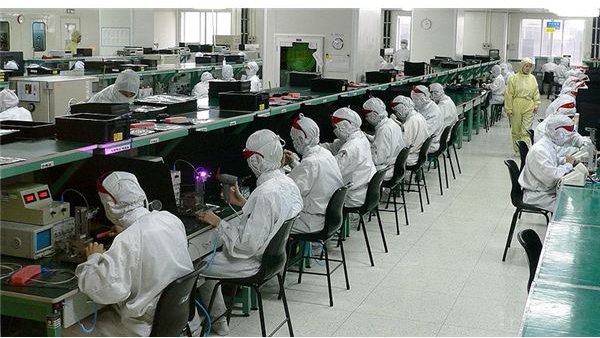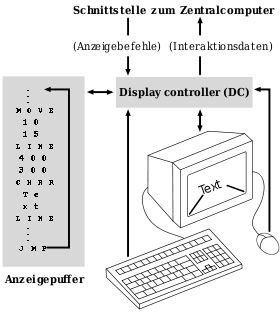A Look at the History of Outsourcing in America
The Notable Timelines in the History of Outsourcing in America
The history of outsourcing by its concept alone is said to date as far back as the 1800s in America’s history. Accordingly, the manufacture of clipper ship sails was done in Scotland, since sails had to be fashioned according to exact specifications. The sail’s effectiveness was essential for long voyages. In citing this particular piece of trivia, it denotes that even long ago outsourcing was a concept resorted to, out of a demand for expertise.
In order to appreciate the information about the surrounding circumstances that make up the history of outsourcing, the facts will be presented according to significant timelines.
1970s

Around the 1970s, the concept of outsourcing was revived. This era saw the beginnings of computer technologies, in development of which presented a likely tool for outsourcing the processing of company payrolls. During that time, this did not require offshore expertise since there were several companies who could provide such services in states or cities where advancements in computerization were taking place..
On the other side of the globe, however, the communist Chinese government opened the country’s doors to global trade. The Chinese people are known for their shrewd business sense; hence they immediately saw how their country could benefit from harnessing the rising concept of job outsourcing. Millions of Chinese citizens found work, as thousands of factories mushroomed through different Chinese regions. In fact, this country earned for itself the moniker “the world’s number one factory.”
1980s

As technology kept on advancing, the 1970s through the 1980s saw several manufacturing companies sending off their raw materials to other countries, not because of expertise but mainly because of economic benefits. Since direct labor costs represented a large portion of manufacturing overhead, harnessing the labor force of third world developing countries presented a better option.
Soon enough, before the 1980s ended, the trend in outsourcing transcended from payroll, to HR functions, to manufacturing, and eventually to Information Technology (IT). Eastman Kodak was the first company to pay heed to an IT outsourcing firm’s advisement. Still, IT outsourcing in its early stage was said to have presented more headaches.
1990s - 2000

Advancing technologies saw the creation of self-service dashboards, which eliminated the occurrence of errors and discrepancies. As the 20th century neared to a close, the Y2K scare about the collapse of major computer systems gave rise to the need for technologies that could update computer systems in just a flash. In fact, the Y2K scare was considered as phenomenal in its effect, because it also brought the advent of the Internet.
Hence, the beginnings of the 21st century saw the boom in technological developments which brought the history of outsourcing to greater heights. Unfortunately, not enough American students were into the technological education scene at a time that technology was booming. In fact, the highest jobs in demand were for IT specialists, but only a few American candidates were considered as highly qualified. Candidates had to meet technological advancements that were becoming more and more complicated.
Accordingly, during that era, there were more Asians who were pursuing science and technological courses. The educational trends in the US are likewise outlined into timelines.
Education as the Top Driving Factor that Led to Outsourcing
2001

-
Only 5% of American students graduated with engineering degrees while 46% percent were Chinese.
-
60% of those who graduated with PhD degrees in Electrical Engineering were of foreign origins.
2002
-
An estimated 590,000 foreign students were enrolled in US colleges and universities and 20% of these numbers were Indian and Chinese students. The proportion of their American counterpart was placed only at 5%.
-
The number of high school seniors for 2002 who took the ACT college entrance exam who intended to pursue degrees in engineering dwindled from 9% posted in 1992, to 6% during this year.
2003
-
The proportion of high school students who pursued engineering degrees dropped to only 2%. This was said to be due to the increasing number of American students who could not meet the math and science prerequisites, based on the standards of global demand for high technology.
-
Education seemed to be the foremost driving factor that led American firms to rely on the technological talents and skills of foreign service providers. To date, however, the lack of technological skills and talents in the American sector has abated, as awareness about the demand for high technological concepts became evident.
Other Driving Factors that Contributed to the History of Outsourcing in America
Broadband
The year 2003 was declared as the beginnings of the “Broadband Age” as sophistication in telecommunications continued. This allowed the business sector to explore the possibilities for outsourcing other types of jobs.
Internet
High speed Internet was being highly utilized in almost every part of the globe. The Internet made it possible for outsourcing parties to share documents in real time, which eliminated some of the risks associated with outsourcing jobs. The Asia-Pacific region is said to be the leading DSL user.
Data Storage
The development of data storage not only drove the costs of paper usage but likewise enhanced the possibilities of outsourcing more jobs with less of the known risks. The history of outsourcing saw the development of floppy disks, magnetic tapes, punch cards, disks, CDs, flash drives, and cloud computing storage. In fact, this development in high-tech data storage has driven down the costs of manpower via outsourcing even further.
Security Features
Whereas before, security seemed to pose considerable threats to businesses in getting involved with virtual business transactions, the enhancement of Internet security feature allowed almost all global businesses to participate virtually, to the point of eliminating physical stores and offices. Employers are in fact hiring telecommuters to do office work.
These are only some of the driving factors which contributed to the history of outsourcing and what it is now today – the Business Process Outsourcing industry. To date, people in the following top five countries in the lead would also be interested to know how this particular phenomenon came about, as it brought improvement to the lives of many in their respective regions:
- India – Engineering and Technical
- China – Manufacturing and Technical
- Mexico – Manufacturing
- United States – Analysis and Creativity
- Philippines- Administrative
Reference Materials and Image Credit Section:
References:
- PEOI. org: Understanding Outsourcing – https://www.peoi.org/Courses/Coursesen/outsrc/fram1.html .
- August 1, 2003 Lori Calabro - CFO Magazine: Rather than invest in technology, more companies are outsourcing HR – https://www.cfo.com/article.cfm/3010071?f=related
- Essentials of Business Processing Outsourcing by Thomas N. Duening , Rick L. Click – https://www.bdu.ac.in/ckr/uploads/Computing/Essentials%20of%20Business%20Process%20Outsourcing.pdf
Image Credits:
